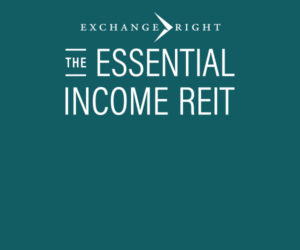Tax Plan’s Limits on Alts in IRAs Wouldn’t Just Hit the Wealthy
October 12, 2021 | Roger Wohlner

A part of the wide-ranging tax package proposed by the House Ways and Means Committee would limit the ability of IRA and retirement account holders to invest in certain alternative assets that are often associated with wealthy and sophisticated investors.
This is an outgrowth of the furor over billionaire Peter Thiel’s $5 billion holding in his Roth IRA. However, in their efforts to curtail some of the strategies used by the ultra-rich, the Democratic proposal would limit the ability of smaller investors, including some of your clients, to fully diversify their retirement accounts with alternatives and private investments.
Self-Directed Retirement Accounts and Diversification
Self-directed retirement accounts are used to invest in assets that many “mainstream” custodians will not allow in IRAs, SEP-IRAs or Solo 401(k) accounts. There are a number of alternative investments beyond stocks, bonds, mutual funds and ETFs that investors house in self-directed accounts, including:
• Direct real estate investments including rental property, commercial property and farmland. Mortgage loans can also be made from these accounts.
• Private debt and private equity investments including stock in a startup company, as well as the purchase of private company debentures and notes. Hedge funds and private equity funds can be held here as well.
• Crowdfunding investments in a variety of areas including business startups, business expansion financing and other types of business ventures.
• Other types of assets including cryptocurrency, livestock, gold and precious metals (with some restrictions) and a host of others.
The ability to invest in these types of alternative assets within an IRA or other self-directed retirement account provides clients for whom this is appropriate with additional options in saving for their retirement.
Proposed Rule Changes
Two rule changes for retirement plans contained in these proposals could limit the ability of investors to invest in many alternative assets inside of a retirement account.
• One part of the proposed legislation would prohibit investments inside of a retirement account that require a minimum level of assets or income on the part of the account holder, or that would require them to have obtained a specific license or credential. Essentially the bill is taking aim at accredited investors, as some of the popular alternatives used inside of self-directed retirement accounts require accredited investor status to invest.
• The proposal also reduces the threshold from 50% to 10% as the level of controlling interest in an entity that an investor can hold in their retirement account. If your client owns 10% or more of their own business or another business as an investor, this would curtail or eliminate their ability to hold these shares inside of their retirement account.
Inadvertently Targeting Non-Wealthy Investors
While the proposed rule changes that limit or prohibit alternatives and private investments in retirement accounts are aimed at the wealthy, in reality these proposals will also hurt many middle- and upper-middle-class investors as well.
For example, the threshold to be an accredited investor is:
• An income of $200,000 or $300,000 jointly in each of the two prior years and the expectation of meeting that income threshold in the current year, or
• A net worth of at least $1 million (either individually or combined with a spouse) excluding the value of their primary residence.
While those meeting these thresholds would not be considered poor by any standard, they generally would not meet the criteria of being wealthy, either. In fact, President Joe Biden’s seeming definition of being wealthy is a taxpayer with an income of $400,000 or more.
In a recent conversation with Henry Yoshida, CFP, founder and CEO of Rocket Dollar a self-directed retirement account provider, he indicated that many of the firm’s retirement account holders are middle- to upper-middle-income investors. He feels these proposed rule changes will limit the options available to these types of investors as they save for retirement.
With the increased popularity of self-directed retirement accounts and interest in various alternative investments in recent years, it feels like middle-income retirement savers are collateral damage in the Democrats’ quest to limit retirement savings options for the wealthy.
Liquidity and Asset Location
Some may argue that these proposed rule changes don’t limit the ability of investors to invest in the types of alternatives that would be prohibited by changes as the rues would apply only to retirement accounts. But for some investors, holding alternative and private investments in their self-directed retirement account makes much more sense than holding them in a taxable investment account.
Often your client’s retirement accounts are their largest source of investable cash for these types of assets. Many of these alternative investments are illiquid and require a number of years to pay out. Access to the funds is often limited during the holding period by lockups.
The liquidity aspect can make alternatives less desirable for middle-income investors to hold in a taxable account. Assets like stocks, ETFs or mutual funds can be sold if additional cash is needed quickly. This is not the case with alternative assets. Limiting the ability to house private and non-publicly traded investments in a retirement account would effectively put these types of investment out of the reach of many non-wealthy investors, but likely will not have this effect on the wealthy.
While we don’t know what the final legislation will look like, advisors with clients who have these types of assets in self-directed retirement accounts should give some thought to a possible exit strategy if needed. The current proposal allows a two-year window to remove these investments from an IRA or retirement account. This will be problematic in the case of some investments with longer lockup periods and other liquidity restrictions.











